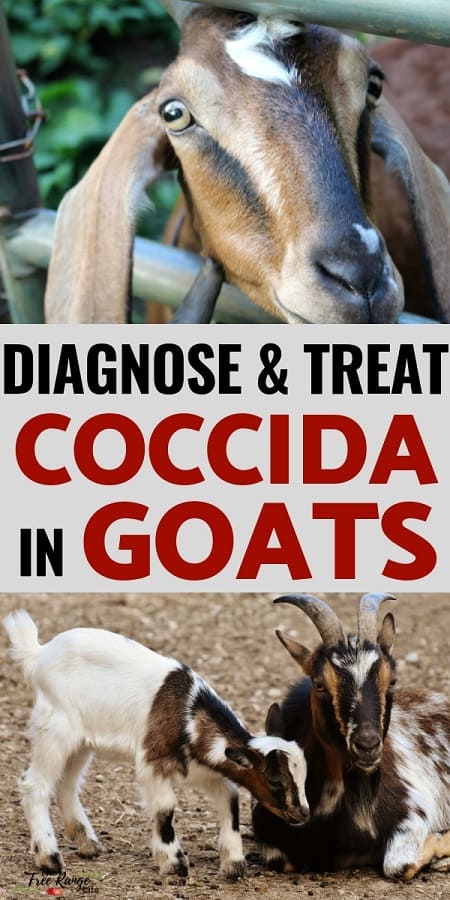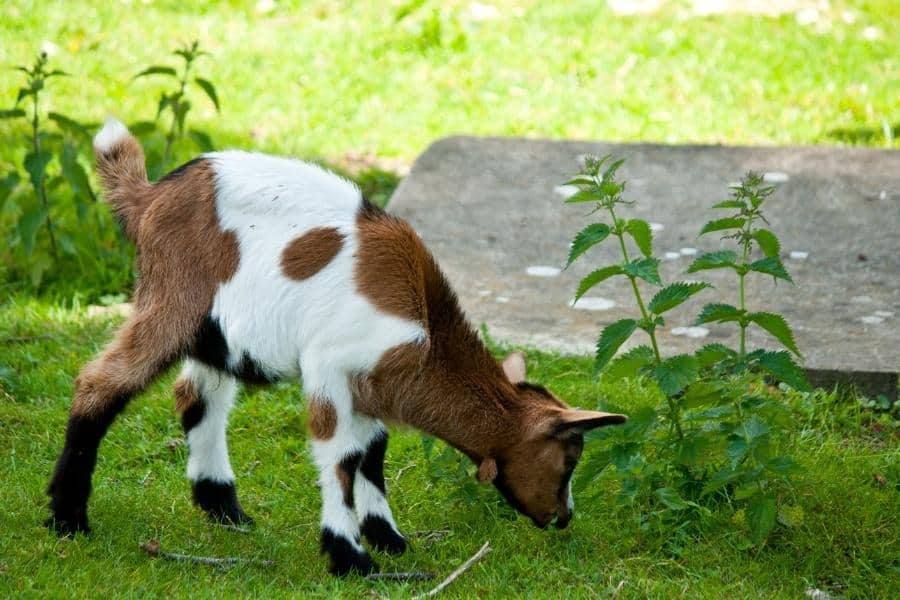Cccidiosis something all goat owners should be aware of. It is a common- and easily prevented and treated- illness in goats, but can have lifelong affects if it is left untreated in your herd.
This site contains affiliate links. If you make a purchase using one of these links, I may earn a commission. Please see my disclosure page for more information about cookies collected and our privacy policy.
What is Coccidiosis in Goats?
Coccidiosis occurs when a goat is infected with large amounts of the Coccidia parasite. Coccidia is a protozoan parasite that is almost always present in the environment and most goats are carriers.
Over the years most goats build up an immunity to this parasite, which is why young goats are especially susceptible to the effects of Coccidia. From about 3 weeks to 6 months of age, goat kids are at a higher risk due to their immune systems not being fully developed.
Coccidiosis is more common in the spring and summer as warm, wet climates tend to cause the parasite to multiply rapidly. It is important to treat quickly before any permanent damage to the goat is done. If treatment is not started in time the condition may become chronic and your goat may always have trouble with growth and health.
Symptoms of Coccidiosis in Goats
The most common symptom of coccidia in goats is scours. If I have a young goat- in the 3 week to 6 month range scouring, and I know it isn’t attributed to a change in feed, I will usually treat for coccidia just in case. You can read more about scours and how to diagnose and treat them on this article: Diagnosing and Treating Scours in Goats
Other symptoms of coccidiosis include:
- Dehydration (get my electrolyte recipe to keep them hydrated!)
- Loss of Appetite
- Fever
- Weight Loss or Poor Growth
- Hunched Appearance
Treating Coccidiosis in Goats
To treat coccidiosis in goats you need an antibacterial liquid called Sulfadimethoxine 12.5%. The brand names for this is Sulmet or Di-Methox 12.5%. These medications are now only available with a prescription from your vet.
You need to dose your goat for a full 5 days to complete the treatment as follows:
- Day 1: 1 cc/ 5 lbs
- Day 2-5: 1 cc/ 10 lbs
The medication might say “drinking water solution” on the label, but for goats you want to give the medications orally, and undiluted.
It’s also always good to support your goat nutritionally when giving medications like this or when they are ill.I suggest giving them a few days of Nutri-drench and giving them a dose of Probios after treatment to replenish the good bacteria in their rumen. Injections of Fortified Vitamin B Complex will also help support their rumen.
To prevent dehydration, be sure to keep them hydrated with fresh water and electrolytes.
Do not feed grains while your goat is sick. Feed green leaves and hay until symptoms have subsided.
Pick up a copy of my Busy Homesteader’s Goat Management Binder to help you keep track of all the most important tasks, records, and information all in one place. Keep track of prevention, medications, kidding, breeding and more!
How to Prevent Coccidia in Goats
It is always better to prevent than to treat! Coccidia is passed from the fecal matter to the mouth. So reducing contamination goes a long way in preventing outbreaks.
To prevent coccidia in your herd you should:
- Keep bedding and houses clean
- Keep water fresh and clean
- Provide enough room in your barns to prevent overcrowding
- Rotate pastures if you are able. Feeding on tall forage will reduce the chance of ingesting contaminated plants.
To prevent coccidiosis you should also take special care of your kids starting at 3-4 weeks of age. One way to do this is by dosing with Sulmet/Di-Methox once a month The preventative dose is 1 cc/10 lbs on day one and 1 cc/20 lbs on days 2-5. Continue this treatment monthly until the kids are 6-7 month old.
A popular alternative is to feed young kids a grain containing a coccidiostat until they are about 6-7 months old to prevent an outbreak when they are most vulnerable. The problem with using a feed with coccidiostat is that you can’t be sure how much medication each of the kids are taking in. Especially since some kids don’t take to grain right away.
Weaning is a particularly tough time on kids. They can get stressed and are no longer getting any immunity passed to them from their mothers. Keep a close eye on them at this time and help them stay calm and as stress-free as possible. Extra nutritional support can help them through this dietary change without issue.





Hi. Thanks for the info. You said to prevent, to use the Di-Methox once a month. But then you go on to say that the dosage is for 5 days. So, do you mean that every month you does them for 5 days? And if the goat is only 10 lbs, then they only get 1 CC for each of the 5 days? Because it looks like you’re saying on day one to give them 1cc if they are 10 lbs, and then 2 CC for 20 lbs on days 2 – 5. It isn’t clear to me.
Thank you.
I understand this to mean, 1cc /10 lbs, then afterwards 1cc/20 lbs, which means if your goat is 10 lbs, half the dose
Yeah, that is correct.
Give your goat 1cc the first day and 1/2 cc for the next 4 days.
i have goat with Coccidiosis baby now he gave it tonthe other 2 i have them medicine just finished up how long should i keep them seperated from other goats so they cant give to others
I have a young Nigerian buck who had coccidiosis before I got him (long story) and was very stunted… 13 lbs at 16 weeks of age 😳. He still has bouts of very soft poop (almost cow patty), and when he does I give him a dose of Toltrazuril. I’m beginning to think his digestive tract is permanently damaged and/or he’s going to be coccidiosis prone his whole life.